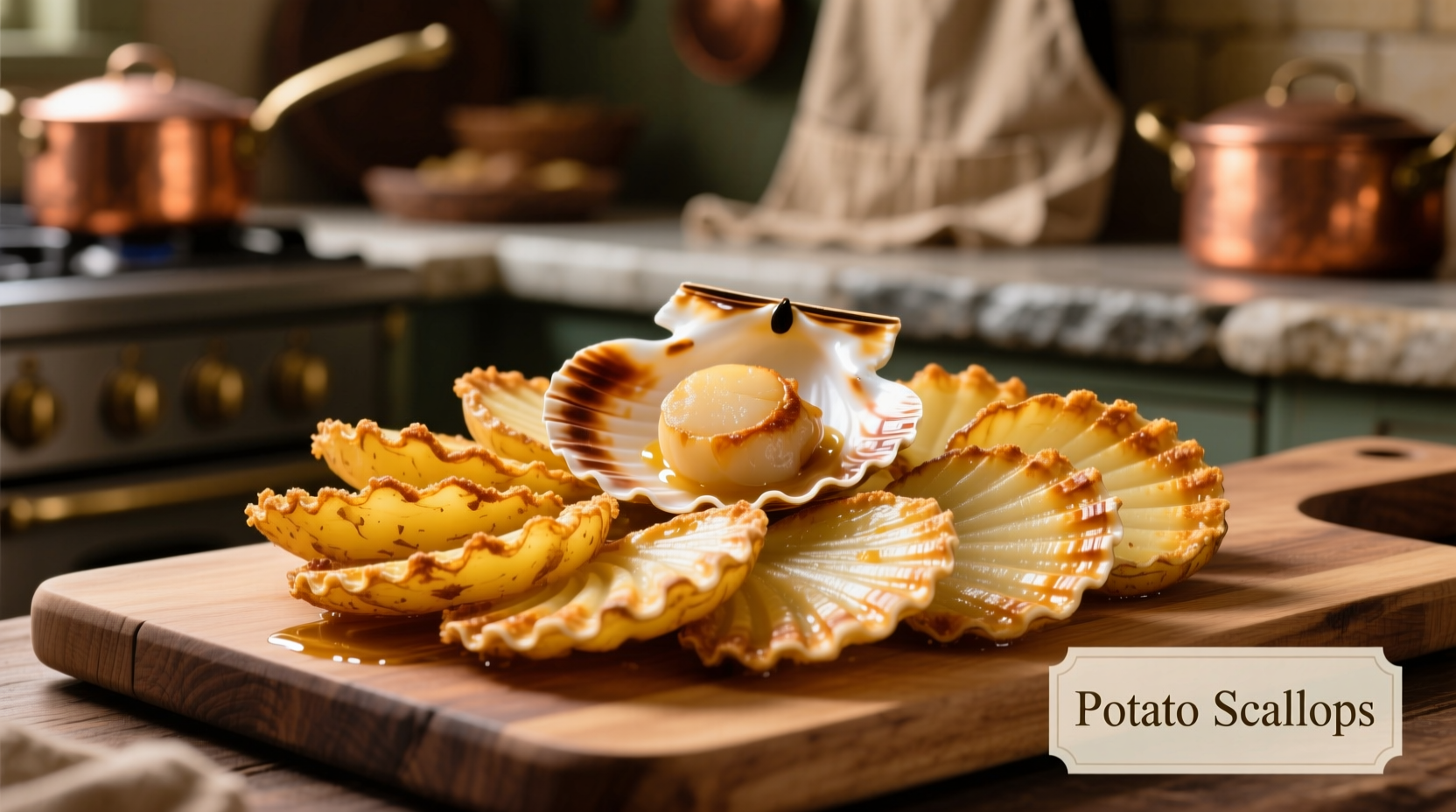What Exactly Are Potato Scallops?
When you search for "potato scallops," you're looking for that perfect crispy-yet-tender potato preparation that elevates any meal. Unlike potato chips which are ultra-thin and uniformly crisp throughout, potato scallops maintain a satisfying thickness that creates a delightful textural contrast. The magic happens when the exterior develops a beautiful golden crust while the interior stays fluffy and moist.
Professional chefs like myself have perfected this technique through years of kitchen experience. The key lies in selecting the right potato variety, achieving consistent slice thickness, and controlling cooking temperature precisely. Get these elements right, and you'll transform humble potatoes into a show-stopping side dish that rivals what you'd find in high-end restaurants.
From Farm to Table: The Evolution of Potato Scallops
Potato scallops have an interesting culinary journey that reflects broader food history trends. While potatoes themselves arrived in Europe from South America in the 16th century, the specific preparation we know as "scallops" evolved much later as kitchen technology improved.
| Era | Development | Significance |
|---|---|---|
| 1500s | Potatoes introduced to Europe | Initially viewed with suspicion, took centuries to become staple food |
| 1800s | Cast iron cookware becomes widespread | Enabled consistent high-heat cooking necessary for perfect scallops |
| Early 1900s | "Scallop" preparation method documented in cookbooks | Named for resemblance to scallop shells' curved shape |
| Modern Era | Oven and air fryer techniques refined | Healthier preparation methods without sacrificing texture |
Your Essential Potato Scallops Toolkit
Before you begin, gather these kitchen essentials that make all the difference between mediocre and magnificent potato scallops:
- Mandoline slicer (with 1/8-inch guard) - ensures uniform thickness
- Cast iron or heavy-bottomed skillet - provides even heat distribution
- Russet or Yukon Gold potatoes - optimal starch content for crisp exterior
- Peanut or avocado oil (smoke point 400°F+) - withstands high cooking temperatures
- Metal spatula - allows proper flipping without breaking delicate slices

Mastering the Perfect Potato Scallops: Step-by-Step
Follow this professional technique that guarantees crispy perfection every time. These steps address the most common pitfalls home cooks encounter when attempting potato scallops.
Preparation Secrets
Start with properly prepared potatoes. Many home cooks skip this critical step, leading to soggy results. After peeling, submerge potatoes in cold water for 15 minutes to remove excess surface starch. This simple step prevents sticking and promotes even browning. Pat each slice completely dry with paper towels before cooking - moisture is the enemy of crispiness.
The Cooking Process
Heat your oil to precisely 350°F (175°C) - use a thermometer for accuracy. Working in small batches to avoid overcrowding, carefully place potato slices in the hot oil. Cook for 2-3 minutes per side until golden brown. The ideal internal temperature for perfectly cooked potato scallops is 205°F (96°C) - this ensures a tender interior while maintaining structural integrity.
Avoid These Common Potato Scallops Mistakes
Even experienced home cooks frequently make these errors that compromise results:
- Using the wrong potato variety - waxy potatoes like reds won't achieve proper crispness
- Insufficient oil temperature - leads to greasy, soggy scallops instead of crispy ones
- Overcrowding the pan - drops oil temperature and causes steaming instead of frying
- Skipping the resting period - let cooked scallops drain on wire rack for 2 minutes before serving
Potato Scallops: Context and Limitations
While delicious, potato scallops aren't appropriate for every dining situation. Understanding these context boundaries helps you serve them at their best:
- Best served immediately - texture deteriorates quickly after cooking
- Not ideal for meal prep - doesn't reheat well compared to roasted potatoes
- Portion control matters - rich and satisfying, so smaller portions suffice
- Complementary pairings - works best with grilled proteins and fresh vegetables
Creative Variations to Elevate Your Potato Scallops
Once you've mastered the basic technique, experiment with these professional variations that add exciting dimensions to this classic preparation:
- Herb-infused - toss slices with rosemary and thyme before cooking
- Spiced - add smoked paprika or garlic powder to the oil
- Cheesy finish - sprinkle with Parmesan during the last minute of cooking
- Truffle enhancement - drizzle with truffle oil after plating
Serving and Pairing Recommendations
Potato scallops shine when paired thoughtfully. They complement grilled proteins exceptionally well, particularly:
- Herb-crusted lamb chops
- Pan-seared salmon with lemon-dill sauce
- Roasted chicken with garlic and herbs
- Grilled portobello mushrooms (vegetarian option)
For the complete dining experience, serve alongside a simple green salad with vinaigrette to cut through the richness. The acidity balances beautifully with the potato's starchiness.











 浙公网安备
33010002000092号
浙公网安备
33010002000092号 浙B2-20120091-4
浙B2-20120091-4